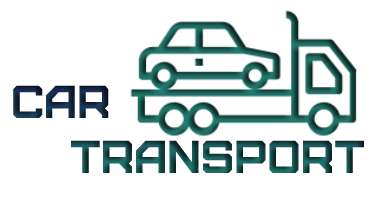Shipping a non-drivable car comes with unique challenges—but it’s entirely possible with the right preparation. Whether your car has a mechanical issue, suffered accident damage, or is a classic restoration project that isn’t road-ready, there are smart, effective ways to get it transported safely and efficiently.
At Car-Transport, we connect customers with experienced car transporters who specialize in all types of vehicles—including those that can’t move under their own power. This step-by-step guide offers non-drivable car shipping advice that will make the process smooth, stress-free, and cost-effective.
Understanding What “Non-Drivable” Means for Transportation
Before making arrangements, it’s important to understand what qualifies as a non-drivable or inoperable vehicle in the transport industry:
- Does not start or run
- Has no brakes or steering
- Cannot roll on its own
- Cannot be loaded without specialized equipment
Depending on the exact condition, your shipping options may vary. Some cars are simply “non-starting,” while others require full winch systems or even forklift assistance.
Quick Example: A car with a dead battery is much easier to ship than one with seized wheels. Be honest about your vehicle’s condition when booking.
Choose a Transportation Company with Inoperable Vehicle Expertise
Not every carrier is equipped to handle non-drivable cars. When searching for the right shipping partner:
- Ask about equipment: Ensure they have winches, forklifts, or flatbed tow access.
- Confirm insurance coverage: Damaged or classic vehicles should be fully insured during loading, transport, and unloading.
- Check experience: A transporter with a track record of non-running vehicle moves will know how to secure your car properly.
Pro Tip: Use a service like Car-Transport to compare vetted carriers who specialize in transporting non-operational vehicles.
Prepare Your Vehicle for Safe Pickup
Just because your car isn’t running doesn’t mean it shouldn’t be prepped for shipment. Taking a few key steps can help avoid delays and damage:
- Clear the car of personal items: Most shipping companies won’t insure belongings inside.
- Check tire condition: Even if the car doesn’t drive, tires should be properly inflated to allow rolling.
- Note special instructions: If brakes don’t work or the car doesn’t steer, inform the transporter beforehand.
- Secure loose parts: Spoilers, bumpers, and mirrors should be taped or removed to avoid damage in transit.
Important Note: Non-drivable vehicles take longer to load and unload. Scheduling flexibility is key—build in some buffer time on either end.

Know What to Expect During Pickup and Delivery
When the truck arrives, the loading method will depend on your car’s condition:
- Winch-equipped carriers: Used for cars that can roll but don’t start.
- Forklifts or flatbeds: Necessary for completely immobile vehicles.
- Rollbacks: Some companies may use a rollback tow truck to assist with loading onto the carrier.
Once delivered, make sure to:
- Inspect the car thoroughly for transport damage.
- Compare its condition with your pre-shipping photos and notes.
- Note any discrepancies on the Bill of Lading before signing.
Delivery Tip: If your drop-off location isn’t easily accessible, arrange for delivery at a nearby open lot or garage with enough space for unloading.
Get Accurate Pricing and Plan for Extra Costs
Transporting a non-drivable car is typically more expensive than shipping a working vehicle. Factors that influence cost include:
- Type of equipment required (winch, forklift, rollback)
- Accessibility of pickup and drop-off locations
- Vehicle size and weight
- Transport method (enclosed vs. open carrier)
Estimate Range: Expect to pay an additional \$100–\$300 on top of regular car shipping rates for inoperable vehicle services.
You can get an accurate, no-obligation quote through Car-Transport, where we match you with transporters who are equipped and insured to handle the job.
Conclusion: Confidence Comes with Preparation
Shipping a non-drivable car doesn’t have to be difficult or risky. With the right preparation and a knowledgeable transport partner, even heavily damaged or non-starting vehicles can be moved across town—or across the country—without hassle.
To recap, follow these essential steps:
- Know exactly what makes your car non-drivable.
2. Choose a carrier with specialized equipment and experience.
3. Prep your vehicle properly for safe handling.
4. Understand the pickup and delivery process.
5. Plan your budget, allowing for additional equipment charges.
At Car-Transport, we take the guesswork out of non-operable car shipping. Our network of professional carriers is ready to help move your vehicle with care, precision, and full transparency.
Need to ship a car that can’t drive? Visit Car-Transport today for a free quote and expert assistance tailored to your unique transport needs.
